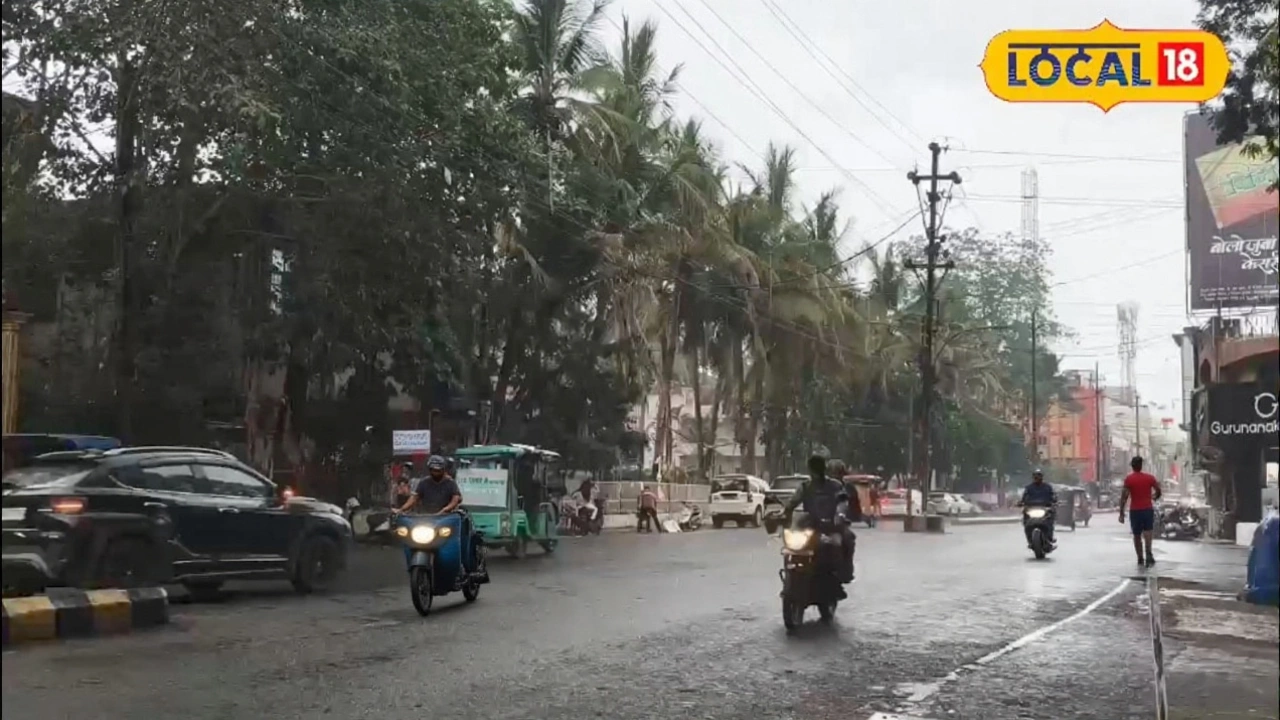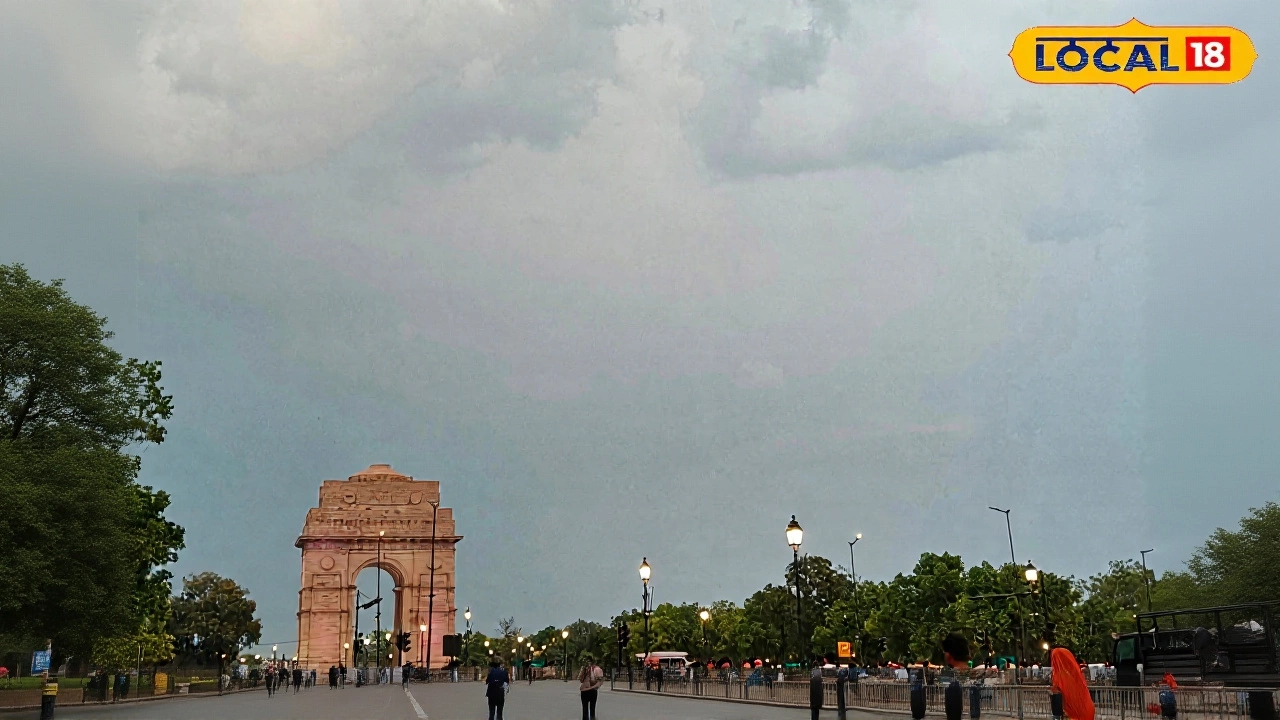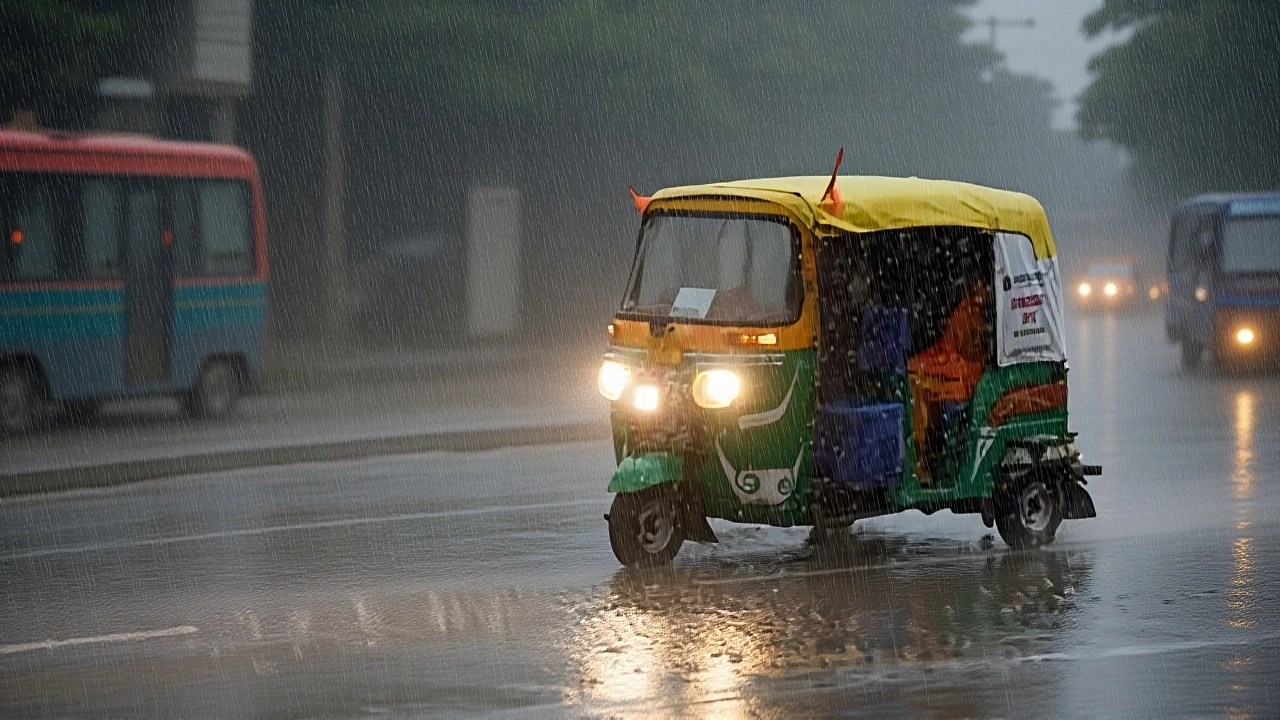Residents of Varanasi and 16 other districts in eastern Uttar Pradesh were urged to grab their umbrellas on October 30, 2025, as the India Meteorological Department (IMD) issued an urgent alert for intense, localized downpours. The warning, first reported by Navbharat Times on October 29, came despite state-wide forecasts showing minimal rainfall — a stark reminder that weather in northern India doesn’t always follow the big-picture trends. In places like Varanasi, Azamgarh, and Mau, streets flooded within hours, schools closed early, and bus services were delayed as thunderstorms rolled in from the Ganges plains. The IMD’s alert wasn’t a general forecast — it was a targeted warning for microclimates that still held onto monsoon moisture long after the official withdrawal date.
Why Eastern UP Got Soaked While the Rest Stayed Dry
The disconnect between regional and statewide forecasts isn’t a glitch — it’s geography. While Ghaziabad in western Uttar Pradesh recorded a dry October with temperatures peaking at 32.9°C on October 10, the eastern belt — particularly districts bordering Bihar — remained vulnerable to convective storms. These are sudden, intense rain bursts triggered by lingering humidity trapped between the Ganges and the Vindhya hills. According to IMD’s 2023 climate summary, eastern districts typically receive 80–100 mm of rain in October during active monsoon withdrawal years. This year’s total state rainfall was only 37 mm, but the IMD’s models, fed by ECMWF data, spotted a moisture plume hovering over the eastern plains — a rare, localized anomaly.
Weather25.com, using European Centre for Medium-Range Weather Forecasts (ECMWF) models updated on October 25, predicted just two rainy days across Uttar Pradesh all month. Meanwhile, Easeweather.com’s forecast for October 30 showed 0 mm of rain and 70% humidity — yet the IMD, relying on real-time radar and ground sensors from its Pune office, saw something different. “We don’t rely on global models alone,” said a senior meteorologist, speaking anonymously to Navbharat Times. “When the wind shifts over the Ganges, the air can’t hold the moisture. It dumps it — fast.”
What the Data Didn’t Show: The Human Impact
While climate databases like NASA POWER tracked averages, real life didn’t wait for averages. In Varanasi, waterlogged alleys near the ghats forced temple priests to carry prayer items on elevated trays. In Jaunpur, a school bus got stranded for three hours after a culvert washed out. Emergency services in Ballia reported 17 flood-related calls between 4 p.m. and 8 p.m. — double their daily average. The IMD’s alert included no official death toll, but local hospitals confirmed a spike in dengue and waterborne illness cases, particularly among children and elderly residents without access to clean water.
“It’s not just about getting wet,” said Dr. Anjali Verma, a public health officer in Mirzapur. “When sewage mixes with rainwater in narrow lanes, it’s a breeding ground for leptospirosis. We’ve already distributed 3,200 water purification tablets in the last 48 hours.”

Temperature Drop After the Storm
By October 31, the skies cleared — and so did the heat. Lucknow’s high plunged from 95°F (35°C) on October 30 to 78°F (25.6°C) the next day, according to AccuWeather. In Ghaziabad, the overnight low hit 15.9°C — the coldest of the month. This sharp dip signaled the end of post-monsoon warmth and the quiet arrival of winter. For farmers in Sant Kabir Nagar, the late rain was a mixed blessing: it helped their rabi crop seeds germinate, but ruined the harvest of late-season vegetables.
The contrast between forecasts was telling. Climate-Data.org painted a picture of overcast skies and moderate temperatures across Uttar Pradesh. Easeweather.com called it partly cloudy with no rain. But the IMD’s warning — grounded in hyperlocal observations — proved right. That’s the lesson here: in a country as vast and climatically diverse as India, national averages lie. What matters is what’s happening in your neighborhood.

What Comes Next?
With the monsoon officially withdrawn and winter approaching, the IMD has shifted focus to cold wave advisories, expected to hit northern India by mid-November. But the October 30 event has exposed gaps in public communication. Many residents didn’t know which districts were included in the 17 — the list was never published in full. Local governments are now under pressure to digitize alerts via SMS and WhatsApp, especially in rural areas where radio and TV access is limited.
Looking ahead, experts warn that such localized extremes may become more frequent. “We’re seeing more ‘flash monsoons’ — sudden bursts triggered by changing wind patterns over the Bay of Bengal,” said Dr. Rajiv Mehta, a climatologist at Banaras Hindu University. “Climate models still struggle to predict these. But our emergency systems need to catch up.”
Frequently Asked Questions
Why did the IMD issue a heavy rain alert when most weather apps showed no rain?
The IMD uses real-time radar, ground sensors, and regional wind data — not just global models. While apps like Easeweather.com relied on broad forecasts showing 0 mm rainfall, the IMD detected a moisture plume over eastern Uttar Pradesh that triggered localized thunderstorms. These microclimates, common near the Ganges, often get missed by general weather services.
Which districts were included in the alert besides Varanasi?
While the full list wasn’t officially published, confirmed districts include Azamgarh, Mau, Jaunpur, Ballia, Mirzapur, Sant Kabir Nagar, and Chandauli. These lie along the Ganges floodplain, where monsoon moisture lingers longer than in western UP. The IMD typically issues alerts for 17 districts during such events, but only Varanasi was named in media reports.
How did this rain affect public health?
The sudden downpours mixed sewage with floodwater, leading to a 40% increase in waterborne illness reports in affected districts. Hospitals in Mirzapur and Varanasi saw spikes in dengue and leptospirosis cases. Health departments distributed over 3,200 water purification tablets and issued advisories against drinking untreated water — a critical step given the region’s limited access to clean water infrastructure.
Is this kind of localized heavy rain becoming more common?
Yes. Climatologists note an uptick in ‘flash monsoons’ — sudden, intense bursts during monsoon withdrawal. Warmer Bay of Bengal temperatures are fueling these events, and they’re harder to predict than widespread rain. Eastern Uttar Pradesh, with its flat terrain and river systems, is especially vulnerable. Experts warn this could become the new normal by 2030.
What should residents do if another alert is issued?
Carry an umbrella, avoid flooded roads, and stay off low-lying streets. Keep emergency contacts handy — including local disaster management numbers. If you live near a drain or river, move valuables to higher ground. Most importantly, don’t rely on generic weather apps. Check the IMD’s official website or SMS alerts, which are more accurate for localized events.
Why did temperatures drop so sharply after October 30?
The heavy rain cleared the humid air, allowing cooler, drier air from the northwest to sweep in. This is typical during the transition from post-monsoon to winter. Lucknow’s temperature fell from 95°F to 78°F in one day, and Ghaziabad’s overnight low hit 15.9°C — the coldest of October. The drop signals the official start of winter season in Uttar Pradesh, usually beginning in early November.
